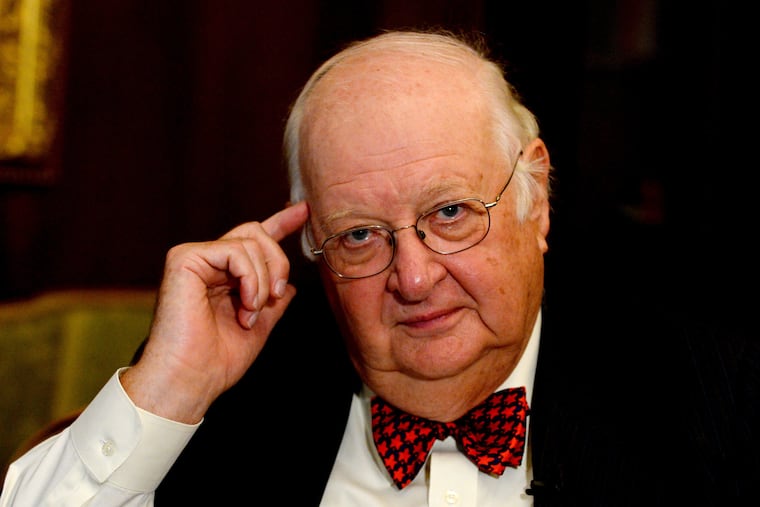A Nobel-winning economist helps you make sense of the life expectancy decline
Angus Deaton explains how COVID-19, deaths of despair, and a slow in progress on cardiovascular diseases led to a drop in life expectancy.

The United States is going through a reversal of fortunes.
The increase in life expectancy over the 20th century is one of the greatest success stories of modern human history. Generations lived with a promise to live, on average, longer than their parents. The expectation was that longevity will only grow.
» READ MORE: COVID and other health crises continue to take years off our lives, CDC says
But something changed in the middle of the last decade — in the world’s richest country. Around 2015, the progress in life expectancy in the United States came to a halt. Princeton economists Angus Deaton and Anne Case found that driving the change were early deaths of non-Hispanic white people who had not graduated from college. Their lives were cut short from suicide, overdose, and alcohol-related liver disease. Deaton and Case called these “deaths of despair.”
Then, a once-in-a-century pandemic hit. Life expectancy dropped in 2020 and 2021, the Centers for Disease Control and Prevention reported this week. A child born in 2021 now has life expectancy as low as one born almost 20 years ago.
To make sense of these trends and to help understand the measure called “life expectancy,” The Inquirer spoke to Deaton, a Nobel-winning economist and the coauthor of Deaths of Despair and the Future of Capitalism, in an interview lightly edited for length and clarity.
What is life expectancy?
It’s a summary measure of today’s mortality rates over the whole age distribution. And it has a conceptual idea, which is: If today’s mortality rates were to remain the same forever, how long would someone born today expect to live? Of course, that’s going to be different next year, or the year after.
So there’s the probability of dying for people aged 30 in 2021. There’s the probability of dying for people aged 60. And you do that for all ages. When writing for a newspaper or studies, you don’t want to have to put down those 100 numbers. You would really like to put down one number. The way demographers like to do it is to calculate life expectancy.
It’s much better thought of as just: “How high are mortality rates this year?”
So what does it mean that life expectancy went down again?
It tells you that, by the token of this particular average, mortality rates were higher in 2021 than they were in 2020.
» READ MORE: Princeton's newest Nobel winner a prize in the classroom
What does history tell us about pandemics and life expectancy?
When you have an epidemic like COVID, which is going to come along and kill a lot of people who didn’t expect to die, or shouldn’t have died, then life expectancy will go down. What you’d expect after the pandemic is over, is that life expectancy bounced back again.
We don’t have good data from the influenza epidemic, but the numbers look like that. There’s this big jagged drop, and then it goes back again. The situation we are in right now is — is life expectancy recovering as we would like it to, or is it not?
And in some sense, the big story about [the latest CDC numbers] is that they went down more instead of recovering.
Life expectancy declined in the United States even before the pandemic. How is that decline related to what is going on now?
The things that Anne and I found were the deaths of despair, which were first among white non-Hispanic and then spread to the rest of the population. So that was part of what was driving down, stopping life expectancy from going up, as it had been.
But also something we didn’t know at the time, which turns out to be quite important.
In the last quarter of the 20th century, the big thing that was driving down mortality rates in the rich world was reductions in mortality from cardiovascular disease. And it seemed to have stopped.
So we don’t really know why that is. Maybe it’s just these years of progress have stopped. We stopped finding new ways to stop people dying of heart disease. Maybe it’s obesity. A lot of people think that.
So you’ve got the drugs, the suicides, the alcohol, plus the slowdown or reversal of cardiovascular disease.
Your research shows that before COVID-19, these increases in mortality weren’t impacting everyone the same.
This is happening to people who don’t have a four-year bachelor’s degree (BA). And none of these bad things are happening to people who do have a four-year BA.
How did the pandemic change deaths of despair?
When the pandemic hit, suicides went down at least initially. I’ve often cited the parallel with wartime: “We’re in a national crisis, and we have a common enemy.” I think that happened in a lot of countries. The drug epidemic rose dramatically during the first year of the pandemic, and we don’t know why that was, but it was rising before the pandemic. So maybe this was just a continuation of trends. There was a big increase in alcoholic liver disease during the pandemic. And that we think was probably the pandemic.
» READ MORE: America needs to talk about the new book that says lacking a college degree might kill you | Will Bunch
What will you be looking for in terms of the pandemic and life expectancy in coming years?
Those things [alcohol, overdose, suicide, cardiovascular disease] may go on. We didn’t do very well with vaccination, compared with other countries. We are not going to know until more data arrive.